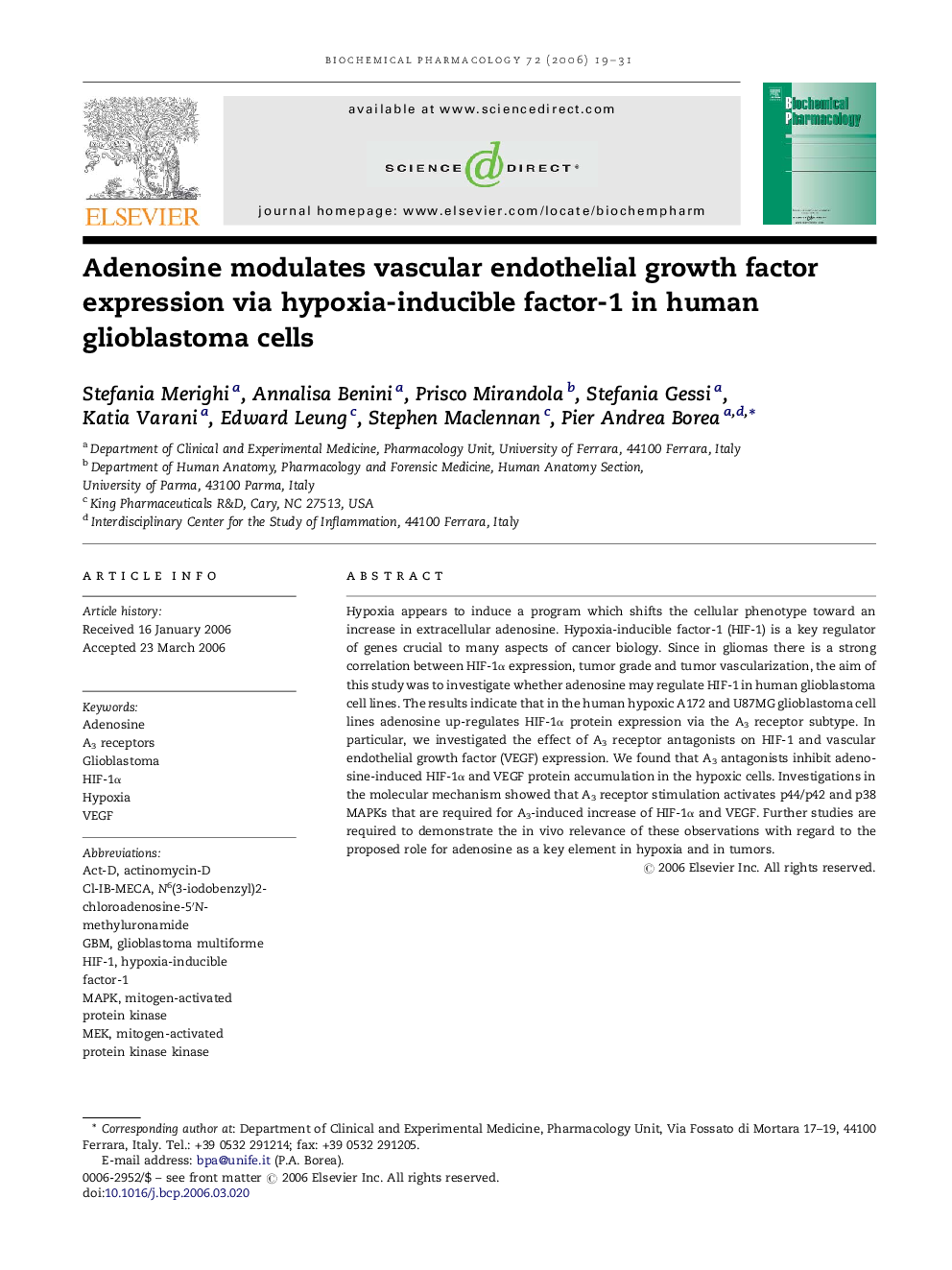| Article ID | Journal | Published Year | Pages | File Type |
|---|---|---|---|---|
| 2515175 | Biochemical Pharmacology | 2006 | 13 Pages |
Hypoxia appears to induce a program which shifts the cellular phenotype toward an increase in extracellular adenosine. Hypoxia-inducible factor-1 (HIF-1) is a key regulator of genes crucial to many aspects of cancer biology. Since in gliomas there is a strong correlation between HIF-1α expression, tumor grade and tumor vascularization, the aim of this study was to investigate whether adenosine may regulate HIF-1 in human glioblastoma cell lines. The results indicate that in the human hypoxic A172 and U87MG glioblastoma cell lines adenosine up-regulates HIF-1α protein expression via the A3 receptor subtype. In particular, we investigated the effect of A3 receptor antagonists on HIF-1 and vascular endothelial growth factor (VEGF) expression. We found that A3 antagonists inhibit adenosine-induced HIF-1α and VEGF protein accumulation in the hypoxic cells. Investigations in the molecular mechanism showed that A3 receptor stimulation activates p44/p42 and p38 MAPKs that are required for A3-induced increase of HIF-1α and VEGF. Further studies are required to demonstrate the in vivo relevance of these observations with regard to the proposed role for adenosine as a key element in hypoxia and in tumors.
